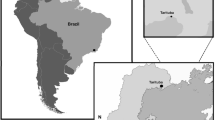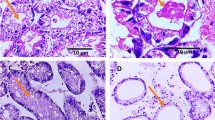Abstract
Filter-feeding molluscan shellfish can concentrate environmentally derived waterborne pathogens of humans, which can be utilized in the sanitary assessment of water quality. In the present study, oocysts of Cryptosporidium were detected in Bent mussels (Ischadium recurvum) at two Chesapeake Bay sites from which C. parvum-contaminated oysters had previously been collected. Spiking of Cryptosporidium-free blue mussel (Mytilus edulis) tissue with C. parvum oocysts showed a 51.1% recovery rate of oocysts, giving an oocyst detection limit of 19 oocysts/0.7 ml of mussel tissue homogenate. The results indicate that Bent mussels, which are common throughout the Chesapeake Bay region, may prove to be useful as biological indicators of water contamination with Cryptosporidium oocysts.
Similar content being viewed by others
Author information
Authors and Affiliations
Additional information
Received: 24 November 1998 / Accepted: 20 January 1999
Rights and permissions
About this article
Cite this article
Graczyk, T., Fayer, R., Lewis, E. et al. Cryptosporidium oocysts in Bent mussels (Ischadium recurvum) in the Chesapeake Bay. Parasitol Res 85, 518–521 (1999). https://doi.org/10.1007/s004360050590
Issue Date:
DOI: https://doi.org/10.1007/s004360050590




